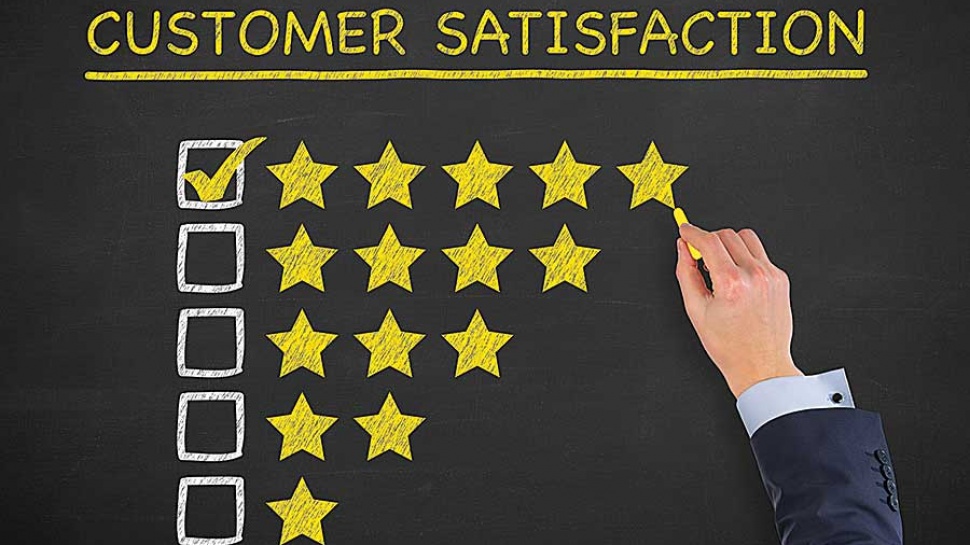Why is service important?
The first question we will answer is: Why is quality customer service important? The best answer is probably this inscription at a store in England saying: "We offer quality, service and low prices. Choose any two. " Practically this means that in conditions of global competition, customers expect you to offer the best possible sales conditions. The product must be inexpensive, high quality and accompanied by a superior service. However, often, as in the case of this action in England, this is not possible. With low price and top quality service, quality is low or it will suffer with low cost and quality of service. And if you offer top quality and service then you must have a high price. If we assume that you cannot increase the price and that you have to maintain the quality of the product because you cannot sell it without it, you only have one single factor that can help you compete, which is the service. Practically the service remains the only factor that can influence the success of sales.
Believe that in most sales situations, the key factor of success has been serving clients. For example, when you enter the electrical appliance store, you will see the same brands of washing machines, the same refrigerators, the same stoves, all of the same or close prices, of exactly the same quality. What then makes people buy? How does the buyer decide to buy in your store and not with a competitor that offers exactly the same conditions as you? The only factor left for you is the service factor. In relation to how a customer is served, it will differentiate stores.
Why do your customers go?
How important is service can be seen from the following list, which shows the percentage of individual factors that influence the reason why customers leave the store in which they regularly purchased. Here's the list:
1% Dies
3% Go away
5% Search for an alternative
9% goes to competition
14% Dissatisfied with products / services
68% Unhappy with the treatment they experience
Pay attention to the fact that only 14% of customers leave the store they shop for because of dissatisfaction with products and services, while as many as 68% of customers do so because they are dissatisfied with the experienced treatment. Practically two of the three customers who leave you do this because they are dissatisfied with the service. Not because of prices, not because of quality, but because of the poor quality service provided to them (or not provided). Ask yourself if in the conditions of global competition and economic crisis you can afford such losses. Remember that the greatest damage from a lost customer is not just not buying more from you, so your sales have decreased, but it automatically went to your competition and increased sales. This means that he has weakened you, and your competitor has strengthened, which is not a pleasant perspective in the conditions of the current global economic situation.
What is customer service?
You can observe customer service in a variety of ways. This is the process, that is, the methodology of doing business, that is the relationship your salesmen achieve, but it is probably the most important aspect of serving that it is the perception that the customers themselves have about the experience of your service. It is a consciousness of the quality of service in your store. The notion of service experience is very similar to the concept of branding. This means that it is only relevant that your customers think about your service. When you collect everything your customers want and expect from you and compare with what they really get, it is their service experience. And this is the perception in their consciousness, that is their state of consciousness.
How to improve service?
The first step in improving customer service in your company or store is to make sure your employees (sellers) believe in the importance of the customer experience. Perhaps it is best to go from them alone. Together with them, make a list of reasons why it's good for them to be satisfied with their customers? Do they themselves say why it is better for them to like them? First and foremost, they will be better at work, they will sell more and more easily, so the company will be satisfied and will earn more, and so on. The point is that they themselves see what is the benefit for them? To clearly see what this means for both them and their colleagues and their bosses, even for the firm itself.
Systematic service
When we started this story about retail sales we found that you need to have a systematic approach to success in selling. To view sales as a process that has its beginning, its duration and the steps you are going through and the final completion of that process. By analyzing the individual steps you can then evaluate where you were successful and where you did not and thus enable the improvement of the system. The same goes for serving. And serving is a process that has its own steps and phases, and can be analyzed and improved.
As we concluded with the sales system, the service system provides one who uses it with practical advantages. A systematic approach will allow you to better assist your customers, to be more successful in individual cases, but even more so, the overall number of satisfied clients will be improved. This does not mean that you will be able to top-notch each client, but success will be more frequent and safer.
Steps in Serving
Depending on the type of communication with customers, there may be various stages in customer service. Here's a few basic steps in serving.
1. Greet the customer
2. Establish his needs
3. Meet his needs
4. Make it a moment to remember
5. Check the result
6. Leave the door open
The first and second steps are very similar to the retail sales steps that we have dealt with in the previous articles. Practically, they are related to establishing communication and matching with the customer (to feel as if he is in his house and to trust you) and to effectively discover his needs (to find out what he really wants). The third step is satisfying needs (providing real help), and your fourth effort is to remember that moment (an unexpected gift or gesture). The fifth step is to check the result (to ask him if he is satisfied) and to make sure his expectations are fully realized (and overcome). In step 6, you will do your best to make the door open (to come again), or to enable open and continuous communication.
In the following sequels we will continue the story of serving and how to make customers loyal, not only to love you, but also to be your advocates and to count on them as your partners. We will also see how customer loyalty represents the best guarantee of success in the conditions of global competition and the current financial crisis.




Share the News